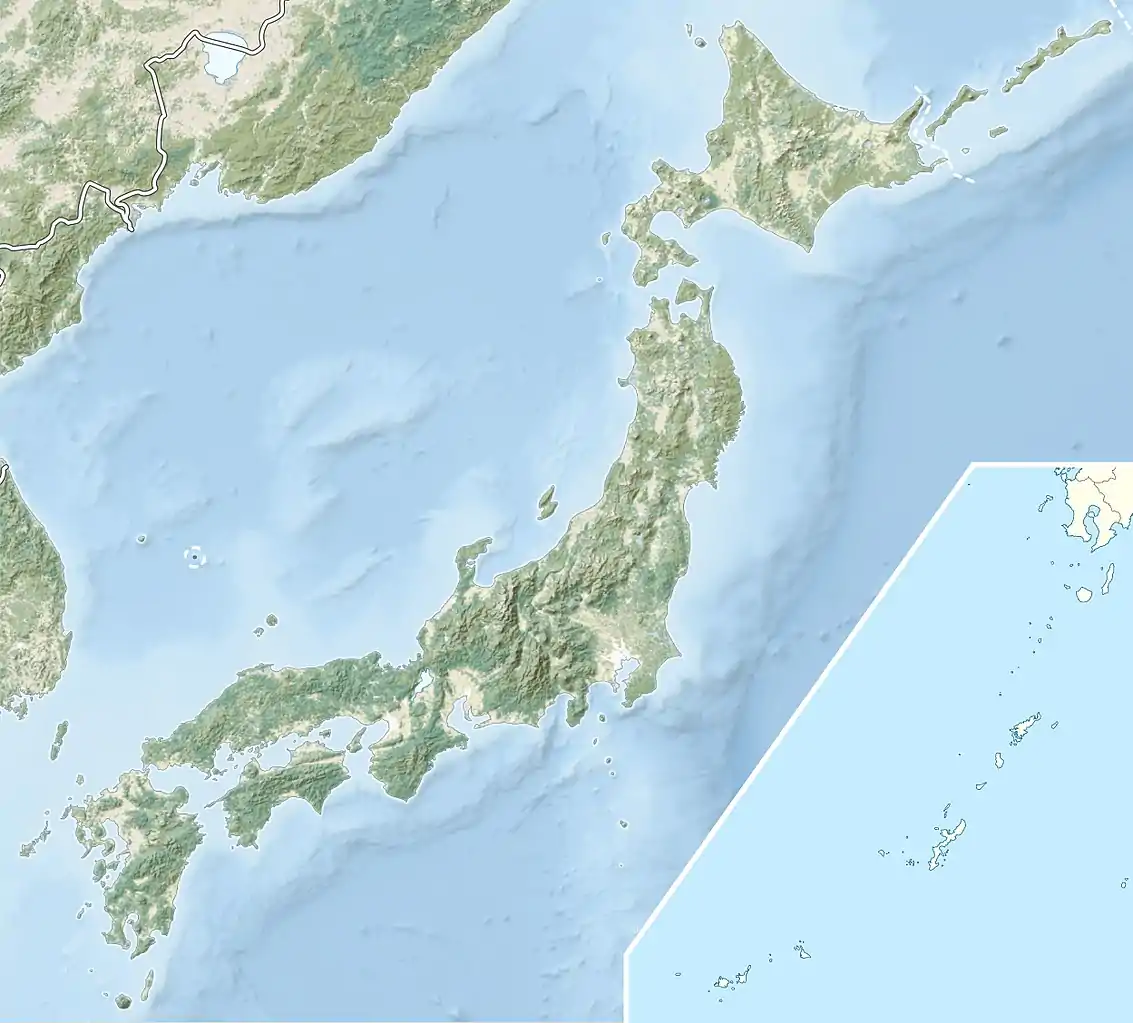Nishizuka Kofun
Nishizuka Kofun (西塚古墳, Nishizuka Kofun) is a kofun burial mound located in what is now part of the town of Wakasa, Fukui in the Hokuriku region of Japan. The site was designated a National Historic Site of Japan in 1935.[1]
西塚古墳 | |
%252C_kouenbu-2.jpg.webp) Nishizuka Kofun | |
 Nishizuka Kofun  Nishizuka Kofun (Japan) | |
| Location | Wakasa, Fukui, Japan |
|---|---|
| Region | Hokuriku region |
| Coordinates | 35°28′5.94″N 135°52′23.76″E |
| Type | kofun |
| History | |
| Founded | 5th century AD |
| Periods | Kofun period |
| Site notes | |
| Public access | Yes (no public facilities) |
Overview
The Nishizuka Kofun is one of a group of seven kofun located in the Wakibukuro neighborhood of central Wakasa, forming the Jōnozuka Kofun Cluster. It is located west of the tracks of the JR West Obama Line railway and to the west of the Jōnozuka Kofun. The tumulus is a zenpō-kōen-fun (前方後円墳), which is shaped like a keyhole, having one square end and one circular end, when viewed from above. The entire length is about 74 meters, with the posterior circular portion having a diameter of 39 meters, and the width of the anterior rectangular portion at 47 meters. However, most of the rectangular portion of the structure was destroyed during the construction of the Obama Line railroad in August 1916, and only the posterior circular portion of tumulus survives isolated in the middle of a rice field. The round portion has a height of 6.7 meters and was covered in fukiishi. Fragments of haniwa have been found in the surrounding fields. The haniwa was recognized to have the characteristics of the Kibi and Owari regions, indicating some relationship with those regions. The tumulus was also originally surrounded by a 20-meter wide moat.[2]
During the railroad construction in 1918, the 5.46 x 1.3 meter stone vertical-style burial chamber was discovered and numerous burial goods were excavated. The burial chamber had a height of 1.5 meters and was painted red with cinnabar. Bronze mirrors, possibly of Chinese origin, magatama and cylindrical beads, gold earrings, metal belt fittings, horse ornaments, and weapons including swords, spears and fragments of armor were found, all of which are currently in the possession of the Museum of the Imperial Collections in Tokyo. Judging from these artifacts, the tumulus was constructed in the late 5th century AD (the middle Kofun period), and it has been speculated that this is the tomb of Kashiwade-no-Omi Ikaruga, which is mentioned in the Nihon Shoki as one of the Kuni no miyatsuko of Wakasa Province. [2]
The site was subsequently excavated in 1970 and in 1991, and in 2008 by ground-penetrating radar. The tumulus is located about 30 minutes on foot from Kaminaka Station on the JR West Obama Line.[2]
| Name | Type | Length | date |
|---|---|---|---|
| Jōnozuka Kofun | keyhole | 100m | early 5th century |
| Shiroyama Kofun | keyhole | 63m | mid 5th century |
| Nishizuka Kofun | keyhole | 74m | end 5th century |
| Nakatsuka Kofun | keyhole | 72m | late 5th century |
| Jūsen-no-mori Kofun | keyhole | 68m | early 6th century |
| Kamifunazuka Kofun | keyhole | 70m | early 6th century |
| Shimofunazuka Kofun | keyhole | 85m | mid 6th century |
References
- "西塚古墳" [Nishzuka kofun] (in Japanese). Agency for Cultural Affairs.
- Isomura, Yukio; Sakai, Hideya (2012). (国指定史跡事典) National Historic Site Encyclopedia. 学生社. ISBN 4311750404.(in Japanese)
External links
- Obama city home page (in Japanese)
- Cultural Heritage of Fukui Prefecture (in Japanese)